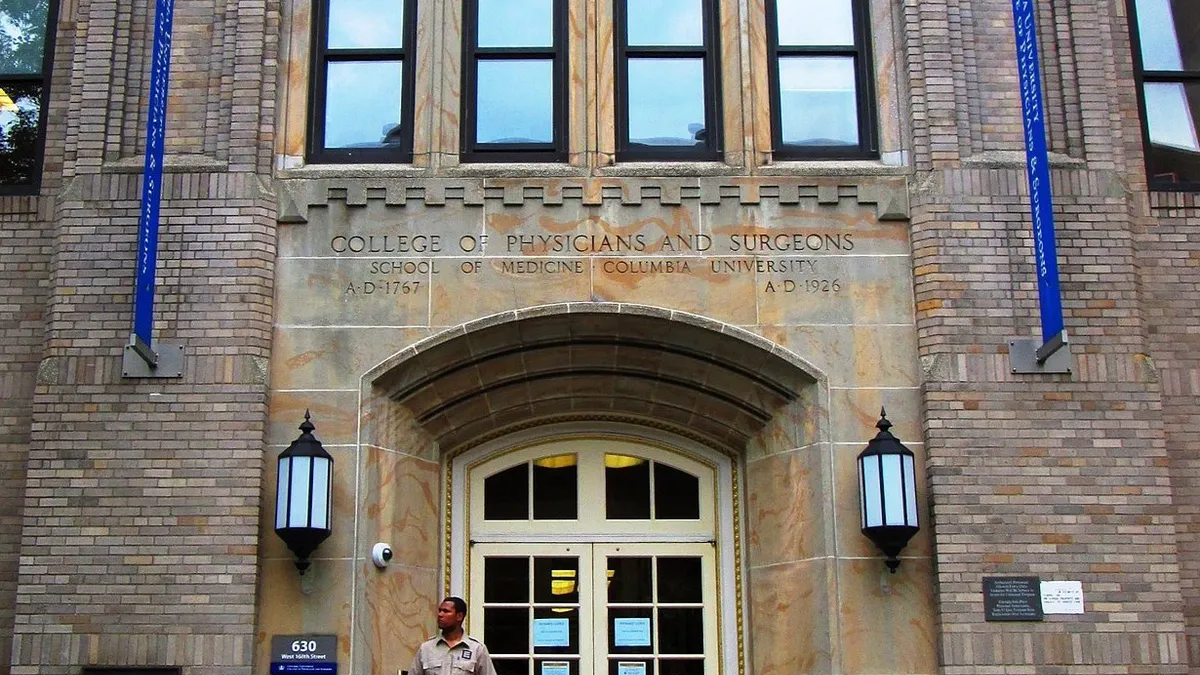The average college student has never known a time without smartphones and social media. They take for granted that there is, or at least soon will be, an app for everything. With a relationship to technology that feels as natural as breathing, they arrive on campus expecting easy access, convenience and speedy results in every aspect of their college life, from studying to socializing.
Providing access to the tech tools and infrastructure required to meet those demands is now an indispensable element of higher education services. When colleges and universities embrace technological innovation to engage students in learning and enhance their life outside of class, they can attract, retain and graduate more students.
We know college life looks different these days. Most college students are living their digitally connected lives at home now and studying online until it’s safe to return to campus. But once they do, you can be sure they’ll want to get right back to being connected 24/7, from the dorm room to the classroom.
Let’s look at three key areas in which technology is transforming campus life, with students in the vanguard pushing for change.
Learning
Schools that facilitate the use of mobile devices for students not only to access their course materials online but also to communicate with their instructors outside of class and to study, do research and collaborate on class projects anywhere, anytime get a thumbs-up from Gen Z. While the debate continues among college educators about whether mobile tech is more of a benefit or a distraction, students have already rendered their verdict. Campus Technology magazine reported on a survey finding that 94% of students wanted to use their cellphones in class for academic purposes and that 75% believed using personal technology devices in class has aided their learning and retention of information.
Students are using technology to design their own learning processes, even if those methods don’t always follow the professors’ lesson plans. “The internet and social media dramatically impact how we learn,” said Sandor Gyerman, a junior at Cleveland State University and co-owner of a social media marketing company called generationZmarketing LLC. “I notice a lot of my peers, instead of really paying attention in class, they would much rather go back home and watch a YouTube video and learn the material on their own. Not only that, but there are homework websites where you can receive guidance.”
An instructor might be understandably dismayed that students are zoning out on classroom lectures or substituting a 10-minute video for the semester’s reading list. But instead of trying to ban students’ digital explorations, many college educators are discovering that understanding their love of technology and how it influences their learning style can spark creative teaching ideas to keep those students engaged.
Room and Board
In student housing design, internet connectivity and other aspects of tech access are regarded as a basic utility, just like running water, as the website College Xpress points out. Today’s college recruits on tours of residence halls will check out each dorm’s Wi-Fi access along with its recreational amenities and proximity to the freshman studies building.
Technology has also become essential for easing student access to campus facilities. For example, some schools have implemented mobile credentialing systems that let students use their smartphones and smart watches to get into dining halls and other campus facilities, as University Business has noted.
Students accustomed to ordering and picking up food in minutes from their favorite restaurants are bound to enjoy having the same option with campus dining, and more colleges are delivering that convenience. At Ohio State, students can use their cellphones to order food from campus dining facilities ahead of time so they don’t have to wait in line. They also can use a phone app to track the number of meal swipes and dining dollars they have on their account.
Leisure
For today’s college student, time off from studying doesn’t mean taking a break from technology. From shopping to socializing, staying connected is an important part of how they spend their leisure. Meetups with friends typically happen via digital planning, said Jared Anderson, Gyerman’s business partner, off-campus roommate and fellow communications major at Cleveland State.
“Every social encounter involves cellphones and texting to organize a time and place to meet,” Anderson said. “It’s rare that you see someone and say, ‘Hey, I’ll meet you at the pizza shop at 6:30.’ It’s coordinated through your phone.”
Not only do college students make social plans by cellphone, but they also shop with mobile devices, and they’re even more game than the previous generation to try new tech features to make purchases. In a global survey by Accenture, 73% of Gen Z shoppers said they were either using or planning to try voice-activated ordering, while 71% said the same about automatic replenishing programs (e.g., monthly subscription programs for fashion, health and beauty, and electronics).
The Accenture study also found that speedy delivery is a top priority for Gen Z online shoppers. Compared with millennials, they are more likely to cancel an online order without a clear promise of the delivery time and less likely to choose free delivery if it means waiting a few extra days. That’s not to say that digitally native Gen Zers are the only ones who want it now when they put an item in their online shopping cart.
“We’re all geared toward that instant gratification,” said Stephanie Benedetto, Director, Product Marketing, Shipping and Receiving SaaS Solutions, at Pitney Bowes. “I’m not saying we’re impatient, but we’re used to receiving things fast and on our time.”
One of Pitney Bowes’ latest receiving solutions is the Intelligent Locker, a secure, self-service system that lets recipients retrieve packages 24/7 with the scan of a barcode. It eliminates long lines at the campus mail center and frees up storage space, Benedetto said.
The efficiency of the new system also gives students living on campus more time to get their cellphones out and research a term paper or plan a rendezvous at the coffee shop. And that suits the lifestyle of this tech-loving generation just fine.
To learn more about self-service pickup and how it can help improve campus life, visit Pitney Bowes and download The New Parcel Management eBook: Higher Ed Edition.







